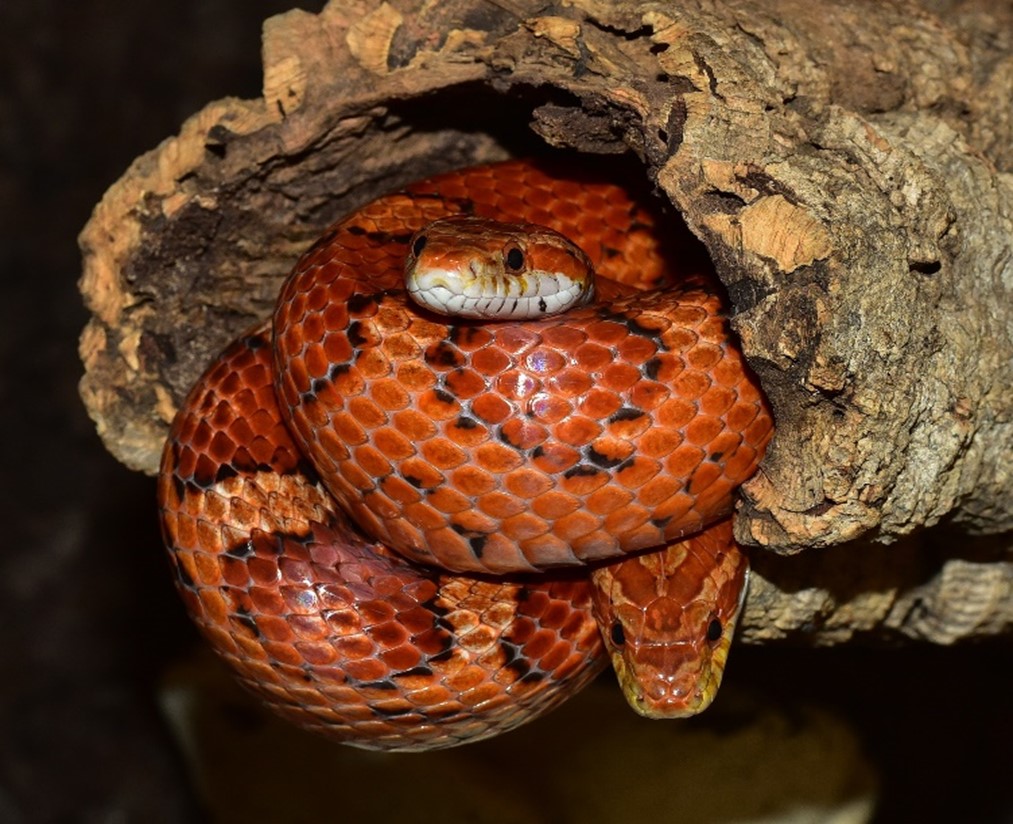CHAPTERS
Navigate to chapter
► Chapter One: Corn Snake in Focus
► Chapter Two: Corn Snake Requirements
► Chapter Three: Purchasing Your Corn Snake
► Chapter Four: Maintenance for Your Corn Snake
► Chapter Five: Nutritional Needs of Corn Snakes
► Chapter Six: Corn Snake Husbandry
► Chapter Seven: Breeding and Raising Corn Snakes
► Chapter Eight: Training and Taming Your Corn Snake
► Chapter Nine: Keeping Your Corn Snake Healthy
Chapter Two: Corn Snake Requirements

Are you now thinking of getting a Corn Snake as a pet? Fantastic! Still quite weird, but unique! After knowing what they are, their characteristics, and how to deal with them, it’s time to give you practical tips on what you need to know before buying one.
In this chapter, you will get a whole lot of information on its pros and cons, its average associated costs as well as the legal licensing you need so that you will be well on your way to becoming a legitimate Corn Snake pet owner – should you decide to be one! Let’s do this!
First of all, you should ask yourself exactly why you want to keep a Corn Snake as a pet. Corn Snake has an average lifespan of 20 – 25 years! It’s like raising a child or getting married. But if you are only considering getting a Corn Snake as a status symbol, then you should rethink your choices. As much as Corn Snake would make a wonderful addition to your household with their natural elegance and exquisiteness, their care would also demand much of your commitment. The responsibilities you would have to carry include feeding them, cleaning after them, seeing to their maintenance, and understanding their behavior.
Corn Snake although most of the time a calm and docile pet, it still has an aggressiveness that you don’t want to see (after all they are still snakes), and their defense mechanism may involve a lot of eating, even their own kind, so please feed them properly. However Corn Snakes also responds very well to human touch especially if it is constant, so you would have to make sure that you do not neglect them. They are not picky eaters but it can definitely bite or harm you, so please watch out. You will also have to check them constantly for ticks and mites and their overall health.
Simply put, Corn Snakes requires a fair amount of guarantee that you will be there to take care of them and make sure they are okay. You cannot take care of a Corn Snake halfway, and you have to be all in – starting with recognizing within yourself if you have what it takes to take care of this lovely and royal creature.
Unlike venomous snakes, you do not need a license to keep a corn snake. In fact, the corn snake is one of the most docile snake species!
As a reminder there is no federal law governing private possession or ownership of exotic animals in the United States. You need to pay attention not on a national level but on a local level, with your local and state laws and ordinances, to see what is permitted and what is not.
The regulations vary from one city/state to another, as some outright ban or prohibit exotic or dangerous animals, while others simply call for permits that set down requirements such as micro-chipping, an established relationship with a veterinarian, and even insurance. Some may also ask you to present proof that you are acquiring the animal from a recognized breeder and that the snake was bred in captivity (as opposed to being captured from the wild), so acquiring a license from the Office of Environment and Heritage can really help.
It is also a good idea to check the rules about keeping pet snakes based on where you are – city, town, neighborhood, and even in the apartment building, if applicable. All these are reasonable precautions to take simply for the fact that should you ever be found to be keeping such a pet illegally, the discovery could result in consequences such as fines or, worse, the confiscation of your pet. You might not even be able to find a veterinarian willing to give your Corn Snake medical care if you are found to be keeping it without the correct permits. (Yeah, human can be quite cruel too, but it’s protocol.)
Permits may also be necessary for importing, exporting, or traveling with an exotic or a naturally dangerous animal, especially in United Kingdom or Asia.
You also need to be constantly updated on information regarding your local state laws at least once every six months. Regulations can change, and you don’t want to find yourself suddenly in violation of a law which was amended after you thought you had abided by it a year ago.
If all this seems complicated and really overwhelming, you have to remind yourself that you are bringing a potentially dangerous animal into a human community. One that can definitely eat anyone alive!
As such, restrictions and limitations should be expected so that the safety of anyone involved will be ensured.
It must also be noted as a point of fact that the illegal trade in exotic animals has been an immensely profitable business for backyard breeders and illegal importers. If you care about these animals at all, you shouldn’t support activities which promote their unlawful capture from the wild or the breeding and transport of these animals in inappropriate and pitiless conditions.
As mentioned earlier, like most snakes, Corn Snakes are still carnivorous and may be agitated when handled carelessly. One must know how to approach their pet and respect their corn snake’s space. We have to keep in mind that our scaly friend has moods. Just like any living creature, they may turn hostile with enough provocation. It is just like having a roommate – be careful not to do anything to make them feel threatened, and remember to give them some space. Respect them, and all will be well.
In this chapter, we will discuss how to build and maintain a home for your corn snake, what to feed your snake, behaviors to watch out for, and the positive and negative things about welcoming a corn snake into your home.
How Many Corn Snakes Should You Keep?
The answer lies within you! Of course it would be great to have more so that your pet snake will have a companion in this “human or humane world.”
Just like when considering other pets, the decision of whether you can keep more than one Corn Snake or not depends on your overall capacity to commit to all of them. Although, it’s probably better to separate them from one another to avoid competition or showmanship, and to keep them from destroying one another or conspired against you.
Of course, you must also keep in mind that keeping more than one Corn Snake means an increase in responsibility financially, timewise, and even mentally.
Efforts of cleanup and cage maintenance will be doubled, or tripled, and can definitely take up all your time. Before committing to it, you should assess your capacity (financially, mentally and timely) to provide what your pets will require without fail. You will have to be completely ready and prepared because you’re about to “raise a child”!
Taking care of one Corn Snake is already a lot, especially if this is your first time owning a snake as a pet. Be sure to make an informed and responsible decision on how many Corn Snake you can responsibly and dutifully care for and keep.
Continue Reading…
Want to read the entire thing?

